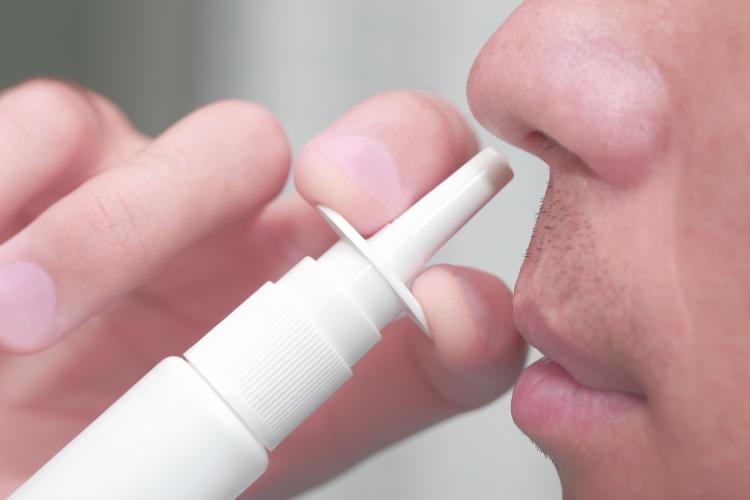

While you go about your normal activities, it measures when and how much acid refluxes into your esophagus. pH monitoring: A small tube is put into the esophagus that will stay there for 24 hours.There are also a number of diagnostic tests available to help establish and monitor a diagnosis of LPR/GERD: LPR/GERD may be diagnosed by carefully listening to the symptoms the patient reports along with a thorough examination of the head and neck.
NASAL DRIP HOW TO
Your doctor is the best source of information on how to use these medications. Medications work in different ways and a combination of medications may help to best control your symptoms. These medications can help to neutralize the acid in your stomach, stop acid production, or help the muscles that empty your stomach. Your doctor may also recommend medications that you can buy over the counter or may give you a prescription for a medication. Raising the head of your bed may also help to counteract the loss of gravity that occurs from lying down. Weight loss often results in significant reduction of reflux symptoms.Try not to eat anything for 3 hours before bedtime because reflux is often worse when we lie down.Less food in the stomach at a time will lead to less reflux. Multiple small meals spread throughout the day is preferable to fewer larger meals.Foods that are known to promote reflux include: fatty foods, spicy foods, coffee, tea, soda, and other caffeinated beverages, alcohol, chocolates, nuts, citrus fruits and juices, mints, cough drops, breath fresheners, gum, hard candies, and some mouthwashes. Avoid foods that are acidic or contain irritating substances that increase the stomach’s production of acid.Many people have LPR without any associated heartburn and instead they experience chest pain, hoarseness, difficulty swallowing, excessive mucous, throat clearing, a sensation of a lump in the throat, sore throat, choking spells, wheezing, post-nasal drip, dry cough, or bad breath. The classic symptom of GERD is heartburn. Tight fitting clothing may place pressure inside the abdominal cavity much like excessive body weight does and therefore may cause reflux symptoms. Obesity and pregnancy also contribute to LPR/GERD symptoms because the additional weight places increased pressure on the sphincter muscles in attempt to keep food in the stomach. Many foods are acidic or contain irritating substances that increase the stomach’s production of acid. Eating large meals and lying down after eating may induce reflux symptoms. What causes LPR?Įating habits, diet, and obesity all contribute to the development of GERD. When stomach contents irritate the voice box and back of the throat/nose, symptoms are less often heartburn, and more often consist of post nasal drip, throat clearing, cough, and lump in the throat. When the refluxed stomach acid comes into contact with the lining of the esophagus, it causes a burning sensation in the chest or in the throat that we call heartburn or acid indigestion. It occurs when the lower esophageal sphincter (LED) does not close properly and the stomach contents are allowed to leak back or reflux into the esophagus and then up to the voice box and possibly the back of the nose and sinus cavity. LPR is similar to Gastroesophageal Reflux Disease, or GERD. Laryngopharyngeal Reflux (LPR) What is LPR? Other causes are less common and should be thoroughly evaluated by an ENT specialist. Acid reflux is treated with over-the-counter or prescription medications, depending upon the severity of the symptoms. Treatments for viral infections, allergies, and sinusitis are discussed in other sections. Swallowing problems or acid reflux can give patients similar symptoms of nasal/throat drainage or phlegm.Ī correct diagnosis of the underlying problem is essential to properly treat a patient with post-nasal drip. Increased thick secretions can occur from low humidity in the winter, a decrease in fluid intake (dehydration), bacterial sinus infections, or from some medications (antihistamines). Post-nasal drainage can often lead to cough, sore throat, frequent throat clearing, and the feeling of a lump in the throat.Īn excess in thin, clear secretions can be from viral infections, allergies, spicy foods, temperature changes, pregnancy and some medications (birth control pills, blood pressure medications). When the mucus becomes thick or excessive in volume, it can cause the sensation of post-nasal drip. Normally this mucus is swallowed unconsciously many times throughout the day. This mucus moistens the lining of the nose and sinuses, humidifies the air, traps inhaled particles, and helps to fight infections. Glands in the nose and throat normally produce 1-2 quarts of mucus every day.


 0 kommentar(er)
0 kommentar(er)
